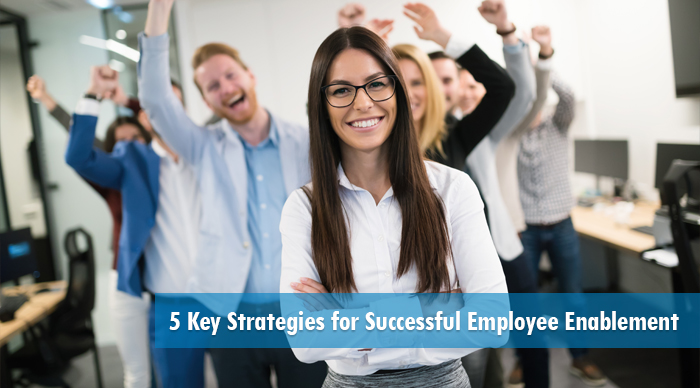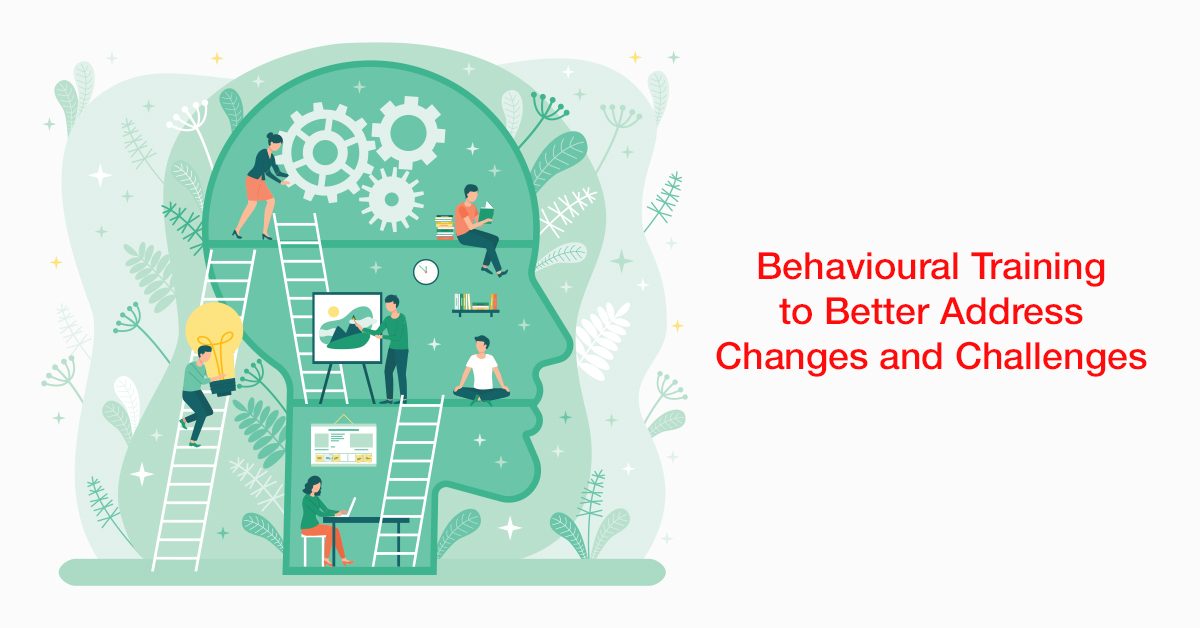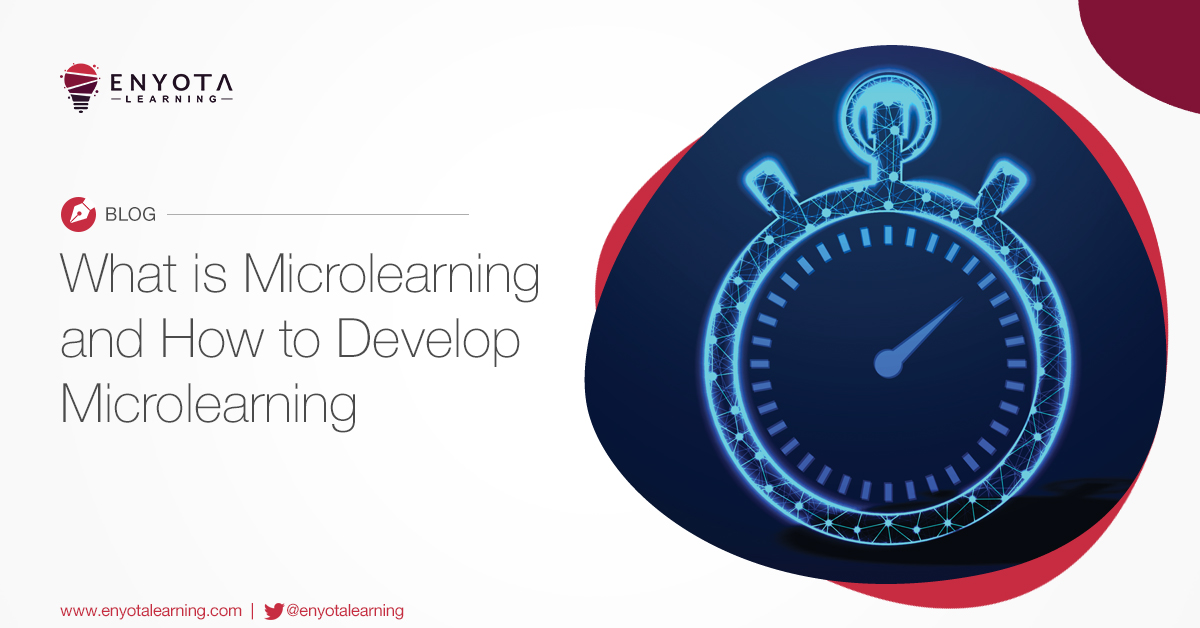
What this article covers:
- What is employee enablement
- 5 Key strategies for employee enablement
- Our services in the field of custom eLearning development
In simple, enablement engages employees. It is when employees feel like they have a stake in the game. It’s where they understand that their actions matter and their actions directly assist with the overall success of the organization. So, the question really is, what can organizations do to successfully enable employees?
Let’s Start by First Understanding – What Truly is Employee Enablement?
Employee enablement is the process where an employer directly assists their employee in ‘realizing’ and ‘achieving’ their ‘self-development goals.’ This is done by empowering employees with the right set of tools needed to succeed at ‘self-development.’ And, also provide a great environment in which to use their newly-found skills and knowledge for the betterment of the organization. It is about providing employees with the support to continue performing at a high-level, while being aligned with the goals and vision of the company.
It is also noted that only enabled employees deliver exceptional service experiences. Most organizations today have a mobile and distributed workforce. A workforce which is solely responsible for interacting and convincing prospecting customers. This makes it very important to focus on employee enablement once again. One so that well-trained employees convince and convert more customers. And second, so that these highly trained employees remain invested in the organization.
Here are 5 Key Strategies for Employee Enablement
-
Creating a culture of transparency
-
Building a culture of listening
-
Provide avenues for immediate learning
-
Targeted learning and development initiatives
Creating a Culture of Transparency
Transparency is critical to employee enablement. In the context of employee enablement, transparency is when employees know what they are doing and why they are doing it.
Transparency provides context to employees. This context is important for employees to deliver better results as it shows them the bigger picture. Basically, it tells them why they do what they do everyday. It helps employees become more focused.
Things like helping employees understand the reason behind initiatives, helping them understand the organizational goals, sharing performance data to keep them objective oriented, having clear, proactive, and effective feedback mechanisms to allow self-correction on time are things that help in creating a culture of transparency within an organization.
Building a Listening Culture
Companies who work towards employee enablement must first create a positive environment of ‘listening to employees’ within the organization.
Employee enablement works better when the employer spends time to identify their employees’ needs. These needs are enablers that allow an employee to grow and do their jobs better. Identifying these enablers is only possible by listening to employees and by considering all the issues that your employees are voicing overtly and subtly. Once your company hears your employees out, it can then take the right set of actions to show that efforts are being made to address these needs or enablers.
Demonstrating your efforts in response to the employees’ needs, giving a platform for employees to voice their needs, and providing a platform for the employees to showcase their work are important to build the listening culture within an organization. It fosters engagement and strengthen links between employees. Making them feel empowered and trusted.
Provide Avenues for Immediate Learning
A fast-paced work environment demands that employees are enabled within the four walls of their organization and everywhere their work takes place.
We are in the age of the people who are technologically proficient and who demand greater flexibility at work. Add the distributed and mobile workforce to that mix. You’ll soon realize that you are working with a population that not just demands email access on their phone, but also needs access to business information on their smartphones.
Organizations thus need to look at their mobility strategies. And, provide employees access to information when they need it and where they need it.
Whether it is critical business information or learning and development opportunities, if your organization wants to drive employee enablement, it must enable ‘immediate learning.’ And this means leveraging the power of mobility.
Targeted Learning and Development Initiatives
Learning and development initiatives are a major priority for all forward-thinking organizations. However, when you want to rear a breed of enabled employees, you need to ensure that these initiatives are targeted and hyper-personalized.
The focus must shift to enabling continuous learning and curating adaptive and engaging learning experiences. Basically, tailoring training and development to suit the individualized tastes of all your employees. The training must remain in synch with the needs of the employees. This must then be delivered according to the individual’s learning styles.
Faster and more streamlined knowledge dissemination, disbursing training material in small, bite-sized pieces to facilitate better consumption and knowledge retention, using the right parameters to measure training success, and proactively providing help to employees when needed are a few things to look at during the enablement journey.
Analyzing the Measure of Enablement
Modern organizations want to hire employees who can hit the ground running from ‘day 1.’ This is possible with effective learning and development initiatives only. Organizations must allow access to information, irrespective of their employees’ location. As collaboration drives the knowledge economy. It is imperative to have a proactive learning processes in place which overcomes performance barriers. It is to ensure that your organization is putting people in a ‘position to succeed.’ Giving them an environment where they ‘can do’ what they ‘want to’ do.
To achieve this, organizations need to start asking the right questions and conducting the right diagnostics with the context in mind. And these activities typically go beyond the subject of motivation and take into consideration the overall performance parameters and the factors that influence them.
Creating an enabling environment is ensuring that employees have the right skills to contribute to their job roles. Training and learning and development initiatives are not a one-time event. They are not something that employees attend during their onboarding or while changing roles. In the new world of employee enablement, training has to be an ongoing process since organizational goals and objectives keep evolving rapidly.
Reach out to us at contact@enyotalearning.com and find out how we at eNyota help you enable your workforce with eLearning courses curated to meet your ambitious workforces needs. We are also licensing our multiple award winning LMS – Abara, contact us below to know more about its pricing and more. Or Sign Up Here and we’ll get back to you.





